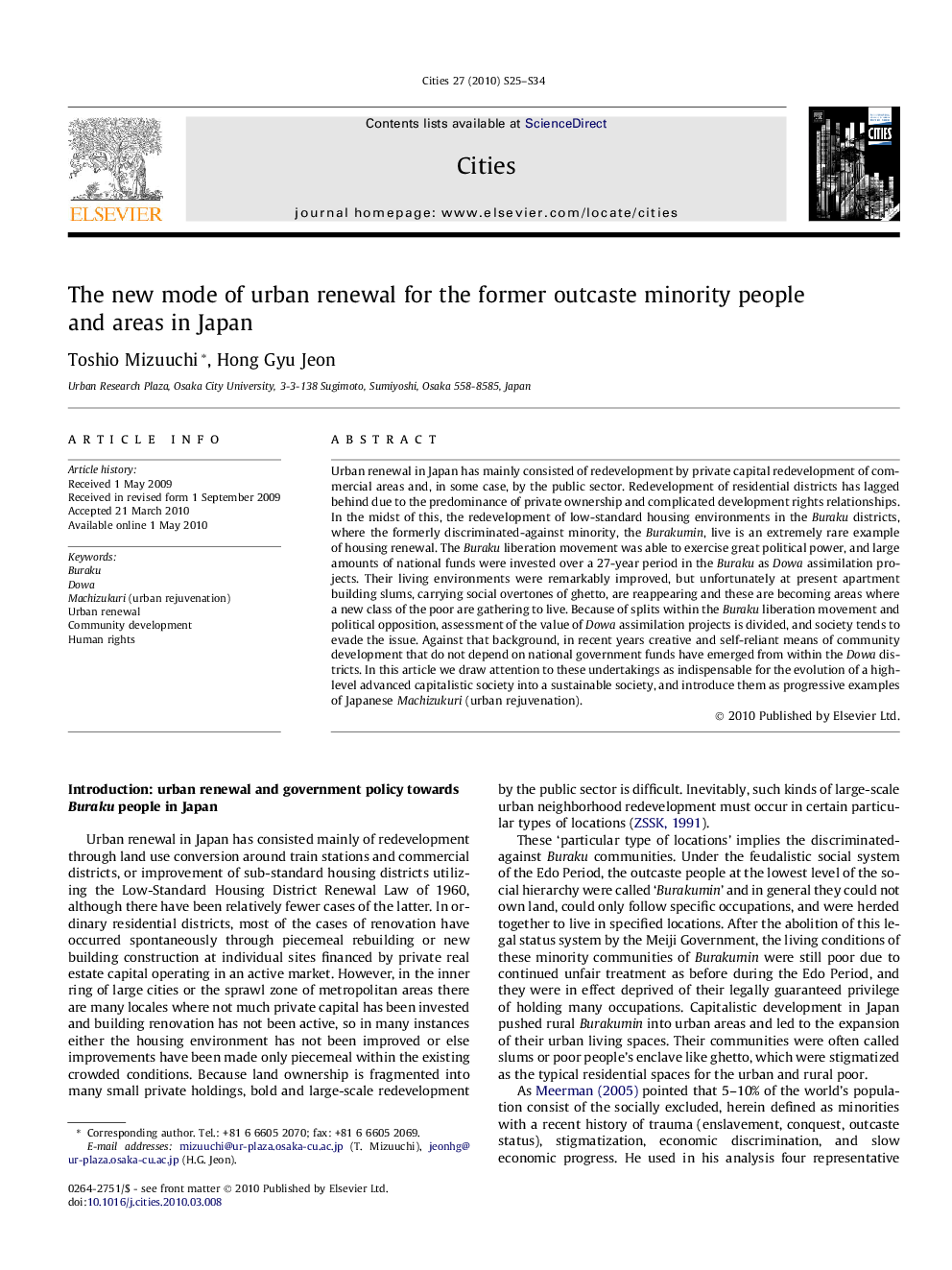| کد مقاله | کد نشریه | سال انتشار | مقاله انگلیسی | نسخه تمام متن |
|---|---|---|---|---|
| 1008854 | 938602 | 2010 | 10 صفحه PDF | دانلود رایگان |

Urban renewal in Japan has mainly consisted of redevelopment by private capital redevelopment of commercial areas and, in some case, by the public sector. Redevelopment of residential districts has lagged behind due to the predominance of private ownership and complicated development rights relationships. In the midst of this, the redevelopment of low-standard housing environments in the Buraku districts, where the formerly discriminated-against minority, the Burakumin, live is an extremely rare example of housing renewal. The Buraku liberation movement was able to exercise great political power, and large amounts of national funds were invested over a 27-year period in the Buraku as Dowa assimilation projects. Their living environments were remarkably improved, but unfortunately at present apartment building slums, carrying social overtones of ghetto, are reappearing and these are becoming areas where a new class of the poor are gathering to live. Because of splits within the Buraku liberation movement and political opposition, assessment of the value of Dowa assimilation projects is divided, and society tends to evade the issue. Against that background, in recent years creative and self-reliant means of community development that do not depend on national government funds have emerged from within the Dowa districts. In this article we draw attention to these undertakings as indispensable for the evolution of a high-level advanced capitalistic society into a sustainable society, and introduce them as progressive examples of Japanese Machizukuri (urban rejuvenation).
Journal: Cities - Volume 27, Supplement 1, June 2010, Pages S25–S34